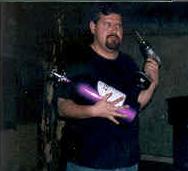ok im getting ready to invest in my first nitrous kit. its the zex wet. theres really only one cath. my vehicle is a 2200 and has 147,000 miles on it.
im warry of putting nitrous on the engine cause i fear the worst. so what all things should i do to ready to engine. i figured a compression test would be the first thing i do, but i cant find what results the 2200 are suppose to put out if in good condition.
personally i dont want to spend 3 k just to run a 700 dollar product. its not sensible. im only wanting to start out with a 35-50 shot for now until i get the cash to build the head and enough for the cam regrind.
so heres what on my list of things to do:
compression test
possible leakdown test
seafoam the engine
colder plugs
premium fuel
is there anything else i should look into doing other than getting a oil change?
also what result should i see from a healthy 2200 on a compression test?, how do you seafoam the engine?, when i change the oil should i try using synthetic this time rather than dino oil?, and btw thanks for helping my dream of running nitrous come true

also maybe a valve adjustment, after seafoaming...
the reason i picked this stuff is because i can mostly do it all myself... im a d.i.y person cause ive taken my car to shops before and got ripped off when they said they did something and they didnt do a damn thing. so now i try to do most of the work myself...
anything else i should check before nitro on this high mileage engine?
comeone bball i know you have something to say....

get a new motor. you know whats going to happen.... i mean common sense is thats alot of miles, expecially on a car thats 7 years old. that thing was DRIVEN. any extra pressure on that thing is gonna speed up the aging of that thing i would imagine.

^^^just because a car is driven doesnt mean anything... heres something i picked up in a nitrous book..
Quote:
People are always concerned about "too high" mileage being an issue when turbo/supercharging/nitrousing a vehicle. The general thinking being that if the mileage is high then the engine will fail quickly when the work is done. But, if the work was done when the engine was new or close to new and the car is driven for 100,000 miles, no one ever says the parts would then have to be removed because of the high mileage.
So, if its ok to continue using a car that has been boosted all its life, why should it be bad to only begin use it at higher mileage.
so just because a car has high mileage doesnt necessarily mean anything its how shes been treated and cared for.... and as long as shes been with me ive had no problems with her and cared for her like a baby.

that whole mileage thing is crap. i know people that have put nitrous on an engine that has more miles than him, and had succes with it

Im a Xbox 360 fanboy...and damn proud of it!!
^^exactly my point im just wondering what i should do prior to installation to make sure everything checks ok...
i think i have about everything needed covered....

for your compression a healthy engine should have roughly 17-20 times the compression ratio for compression. so if you compression is 10:1 the it should be between 170 and 200 PSI and all the cyl should be within about 5-10% of each other. with that said you engine should really be no less then 150 psi per cyl and if it is deffinately procede with caution.

a built bottom end ensures you of a less chance of throwing a rod i think, i know once my engine was rebuilt i felt alot better about juicing the engine cause i had the goodies in it to make it strong, if you have cash for new pistons and rods then i say go ahead, if not, proceed with extreme caution i say.

I have 180k miles on my 95 2.2! I have the Zex dry kit on it. 4 bottles on a 55 shot and just finished the second bottle on a 65 shot. I have NGK TR6 plugs gapped at .035. I have no fuel enrichment whatsoever, (I know I should, but I'm just lazy) and there is a crack in the head on the #4 plug hole. I managed a 15.4 with the crack head and the 55 shot.
I agree that milage has no determining factor on when you can use boost or nirous, it soley depends on your engines state of tune, and how well you keep up on your mantinence. I don't remember 2.2's or 2200's losing rods, but having the #2 piston cracking the upper ring land ultimaly destroying the piston and taking the head out with it. Correct tuning will keep you safe, just don't be brave like me!

Newest member of a Nitrous casualty









